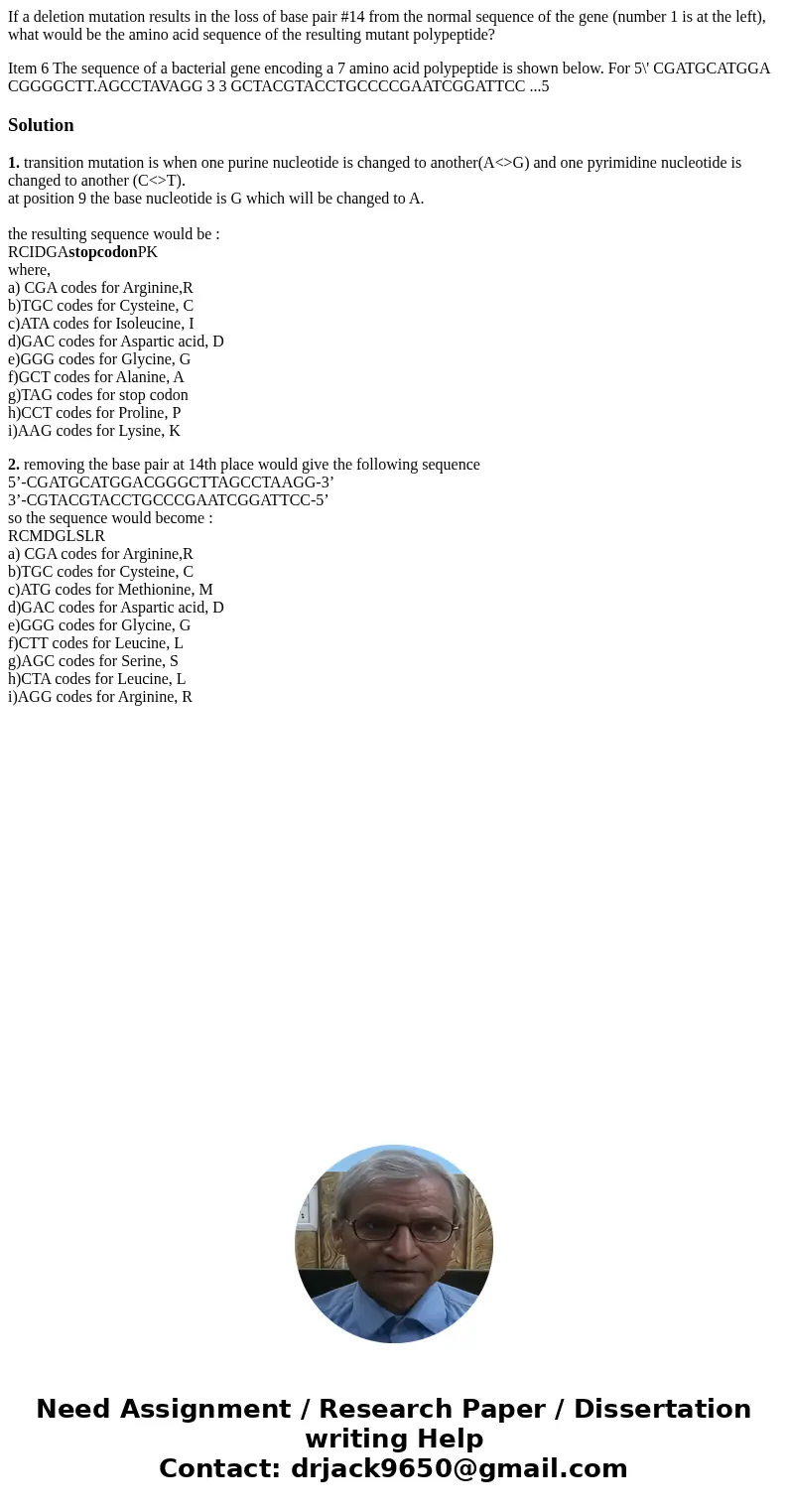If a deletion mutation results in the loss of base pair 14 f
If a deletion mutation results in the loss of base pair #14 from the normal sequence of the gene (number 1 is at the left), what would be the amino acid sequence of the resulting mutant polypeptide?
Item 6 The sequence of a bacterial gene encoding a 7 amino acid polypeptide is shown below. For 5\' CGATGCATGGA CGGGGCTT.AGCCTAVAGG 3 3 GCTACGTACCTGCCCCGAATCGGATTCC ...5Solution
1. transition mutation is when one purine nucleotide is changed to another(A<>G) and one pyrimidine nucleotide is changed to another (C<>T).
at position 9 the base nucleotide is G which will be changed to A.
the resulting sequence would be :
RCIDGAstopcodonPK
where,
a) CGA codes for Arginine,R
b)TGC codes for Cysteine, C
c)ATA codes for Isoleucine, I
d)GAC codes for Aspartic acid, D
e)GGG codes for Glycine, G
f)GCT codes for Alanine, A
g)TAG codes for stop codon
h)CCT codes for Proline, P
i)AAG codes for Lysine, K
2. removing the base pair at 14th place would give the following sequence
5’-CGATGCATGGACGGGCTTAGCCTAAGG-3’
3’-CGTACGTACCTGCCCGAATCGGATTCC-5’
so the sequence would become :
RCMDGLSLR
a) CGA codes for Arginine,R
b)TGC codes for Cysteine, C
c)ATG codes for Methionine, M
d)GAC codes for Aspartic acid, D
e)GGG codes for Glycine, G
f)CTT codes for Leucine, L
g)AGC codes for Serine, S
h)CTA codes for Leucine, L
i)AGG codes for Arginine, R

 Homework Sourse
Homework Sourse